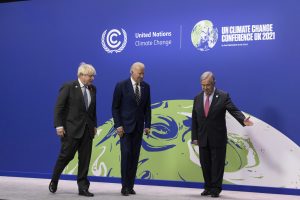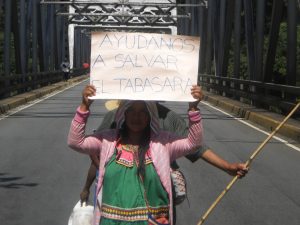By Daniel Draper
Delegates from the 197 parties to the United Nations Framework Convention on Climate Change (“Climate Convention”) recently gathered in Glasgow for Conference of the Parties (COP) 26, which ran from October 31st to November 12th, 2021. This edition of COP has drawn significant scrutiny from the global community. According to the Paris Agreement adopted at COP 21 in 2015, parties are required to bring forward their first five-year revisions to their plans to reduce domestic emissions, known as Nationally Determined Contributions (NDCs). The initial NDCs, established contemporaneously with the Agreement, were found to be insufficient to limit average global warming above pre-industrial levels to 2°C, let alone 1.5°C. Thus, if there was to be any hope of achieving the Agreement’s objectives, the parties needed to demonstrate much greater collective ambition with their NDCs this time around.

The NDCs were not, however, the only topic of discussion at COP 26. Many of the implementation details of the Paris Agreement remain to be finalized, chief among them the details of the system of financing, capacity transfer and emission credit trading outlined in Article 6 of the Agreement. The system reflects the fact that many states lack the capacity and/or resources to undertake the types of activities that would meaningfully reduce emissions, and thus would be precluded from fulfilling even modest ambition in the absence of assistance. Consequently, finalizing and operationalizing the system is a critical prerequisite to fulfilling the collective ambition needed to achieve the Agreement’s objectives.
Problematically, designing the Article 6 system without due regard for the interests of those likely to be directly affected by the projects and programs would pose a serious threat to human rights. It would thus risk undermining the Agreement’s foundational principles, in particular, the explicit commitment by all parties to:
respect, promote and consider their respective obligations on human rights, the right to health, the rights of Indigenous peoples, local communities, migrants, children, persons with disabilities and people in vulnerable situations and the right to development, as well as gender equality, empowerment of women and intergenerational equity[.]
Past experience with projects that would likely qualify for Article 6 treatment demonstrates that fear of this threat is not unwarranted. For instance, hydroelectric projects often involve displacement of local communities and destruction of the natural environments upon which those communities depend. Operation of such projects also reduces downstream water levels, which interferes with the health and livelihood of people living on the river. Similarly, biofuel policies and projects have contributed to food shortages, water stress, widespread deforestation and forced displacement of Indigenous peoples.

As part of our collaboration with David Boyd, the United Nations Special Rapporteur on human rights and the environment, we at the Allard Law International Justice and Human Rights Clinic considered how the Article 6 system might ensure that human rights are protected. We agree with John Knox, former Special Rapporteur on human rights and the environment, and the Center for International Environmental Law that the Article 6 system should include human rights safeguards. These safeguards must ensure that the owners of projects and programs that qualify for Article 6 treatment continually assess and address risks to human rights throughout their activity’s lifecycle. Furthermore, those affected or likely to be affected by the activity must be continually engaged in meaningful and inclusive consultation by owners and must be provided with effective channels through which to air grievances and seek redress in the event of a right violation. Finally, states must buttress the protective actions of owners with legal and institutional protections of their own.
Such safeguards are already incorporated into the environmental and social policies of the Global Environment Facility, the Green Climate Fund and the Adaptation Fund – the financial mechanisms established under the Climate Convention. All three of these mechanisms are available sources of funding for activities that qualify for Article 6 treatment. Failing to incorporate safeguards into the Article 6 system that are at least as robust as those employed by the financial mechanisms would thus risk creating a situation where the degree of respect for and protection of human rights accorded by the owner of an Article 6 activity depends on whether the activity received funding from one of the mechanisms.
Sadly, human rights do not protect themselves. History has shown that even undertakings supported by the best of intentions can lead to human rights violations if these rights are not treated as first-class concerns by all stakeholders. In order for the Article 6 system to be effective and meet the principles laid out in the preamble of the Paris Agreement, robust and comprehensive human rights safeguards need to be a central feature. Avoiding climate catastrophe must not come at the expense of those on the ground.
About the author: Daniel Draper is a second-year student at the Peter A. Allard School of Law. He is deeply concerned about the present and future state of the natural environment, and is consequently particularly interested in the intersection of environmental and international law.